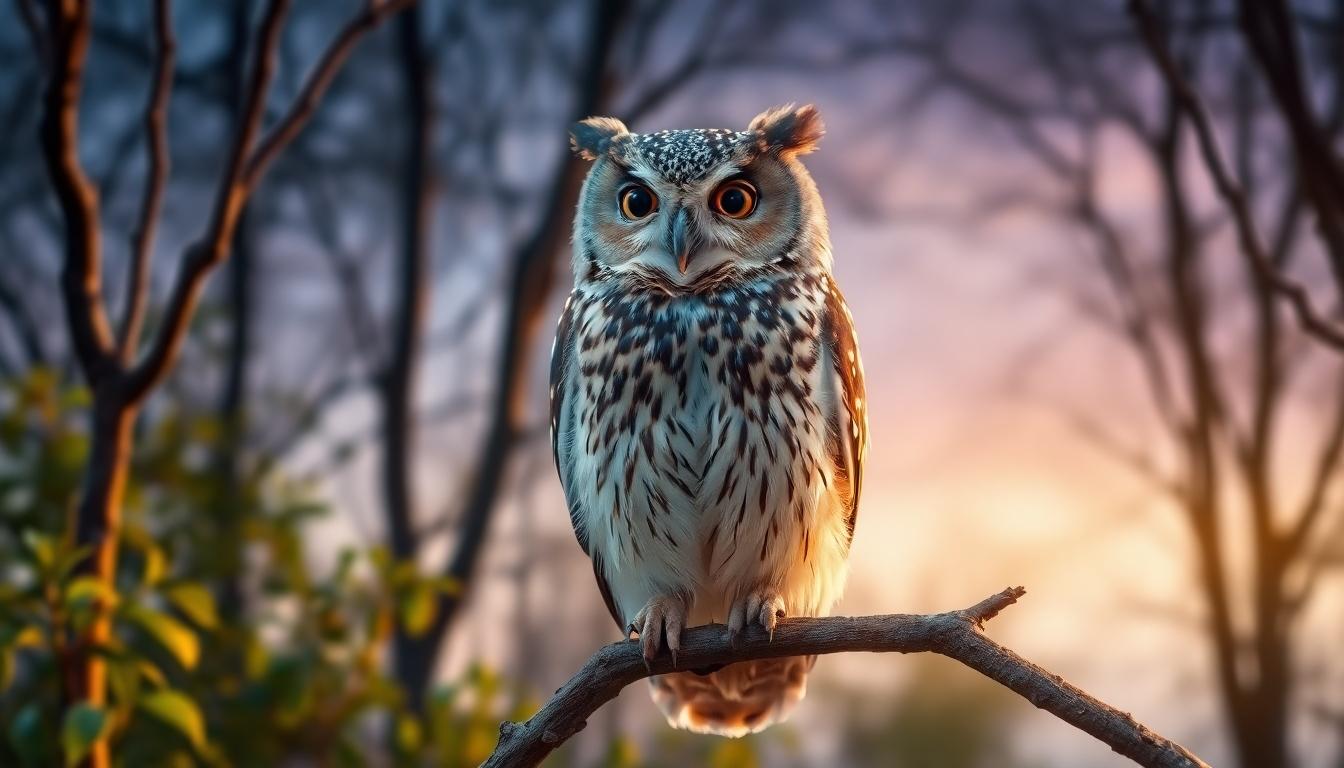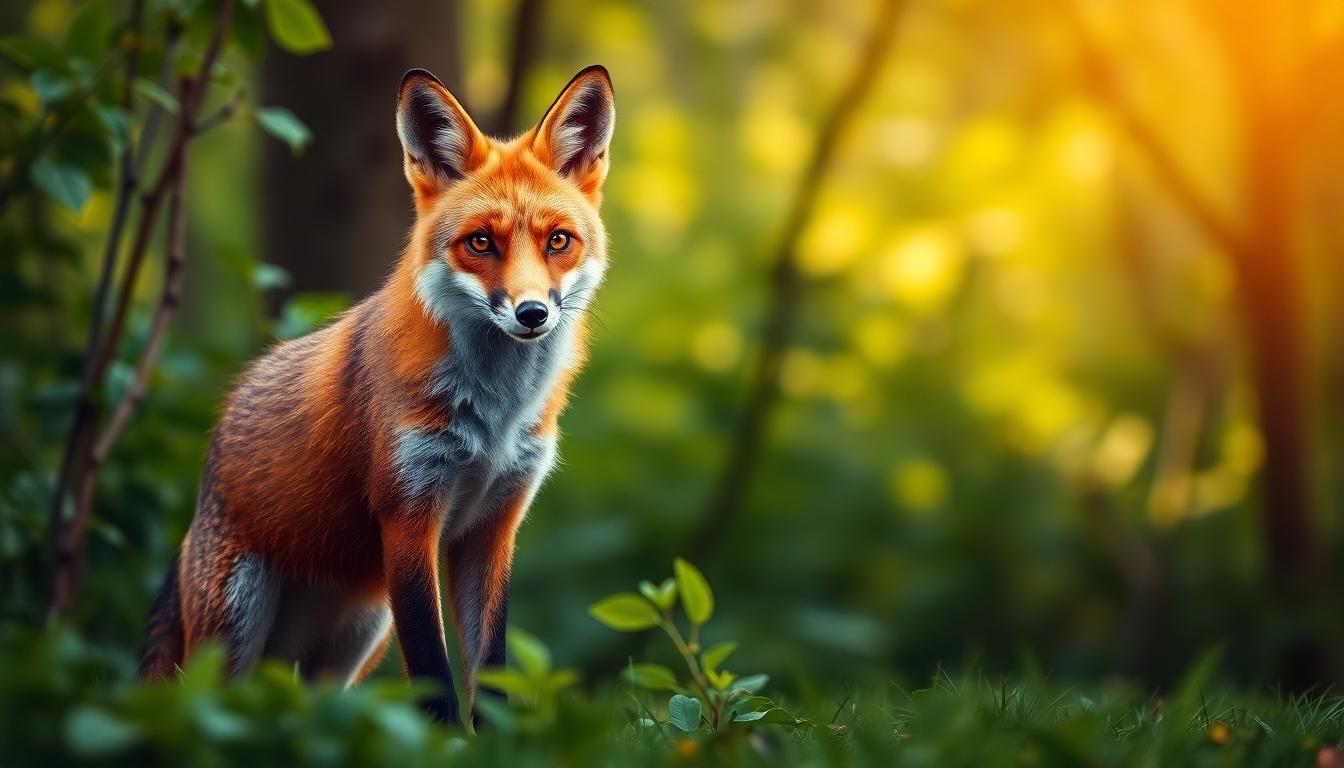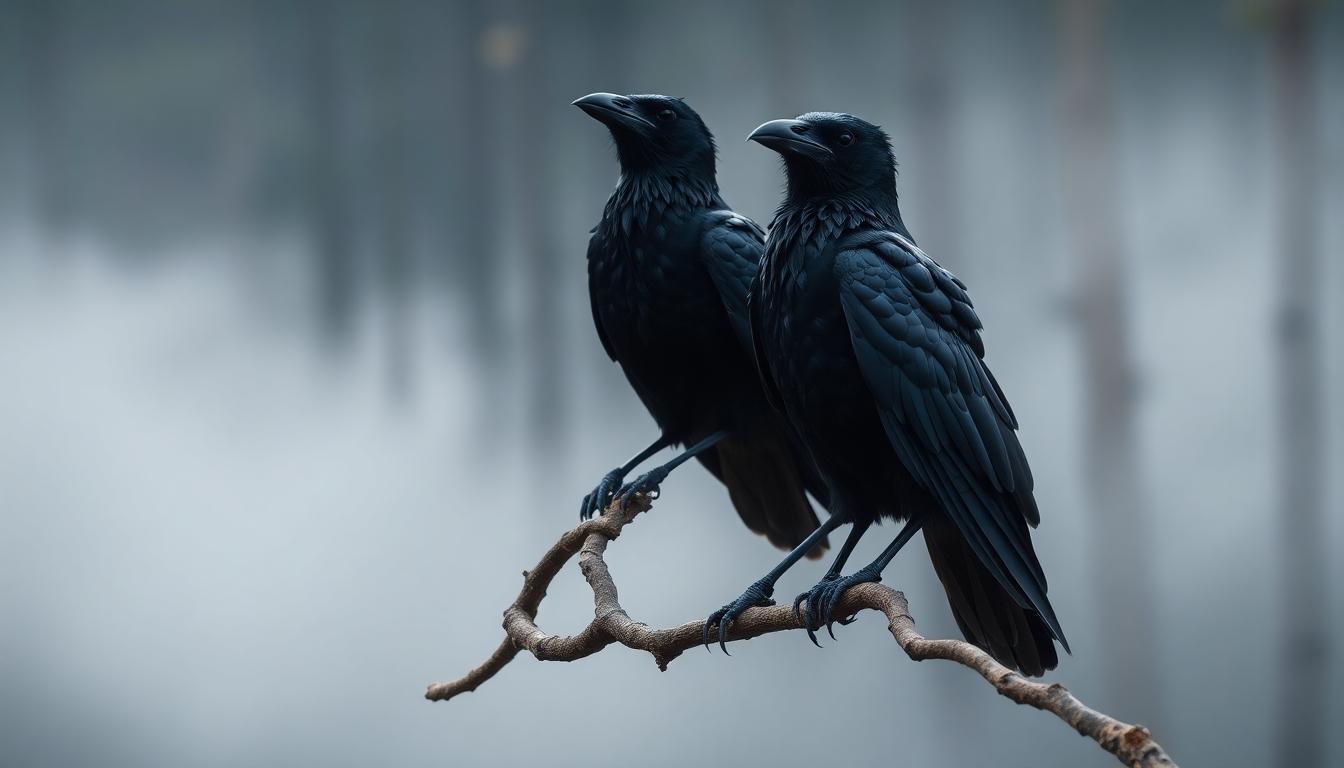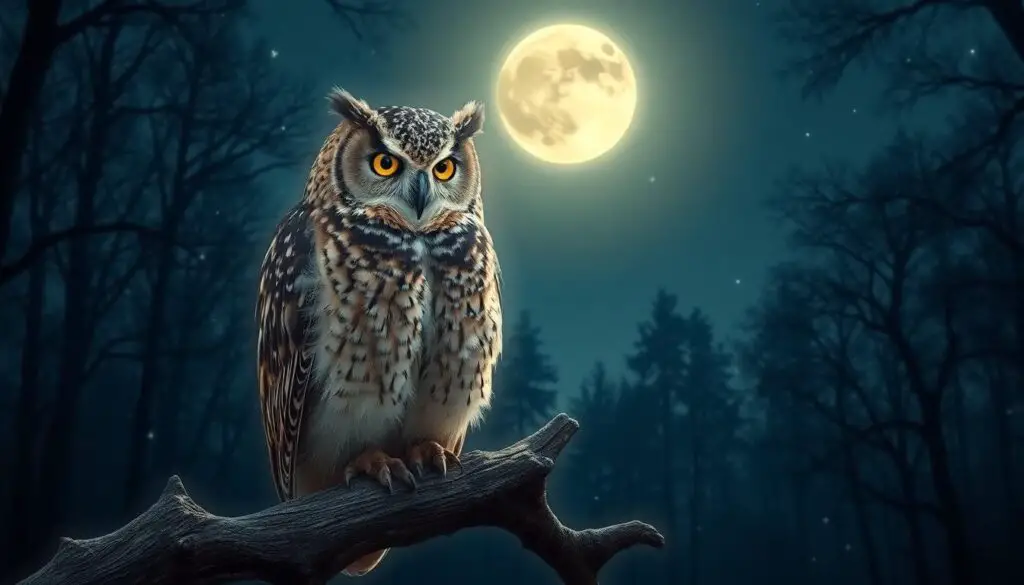Throughout history, animals have served as powerful symbols of wisdom across cultures and civilizations. From ancient myths to modern literature, certain creatures have consistently represented intelligence, foresight, and deep understanding. We’ve gathered the most important wisdom-bearing animals that continue to inspire and teach us today.
When we explore these symbolic creatures, we discover fascinating stories and traditions that explain why they’ve earned their reputation for wisdom. The owl’s penetrating gaze, the elephant’s remarkable memory, and the fox’s clever adaptability are just glimpses of what we’ll uncover. Join us as we investigate into the meaningful connections between these remarkable animals and the wisdom they embody in human consciousness.
Related Posts:
- Unlocking the Mysteries of 50: Exploring its Symbolism Across Cultures and Contexts
- What Do Snails Symbolize? Ancient Meanings & Cultural Significance Revealed
- Animals That Symbolize Hope: 6 Inspiring Creatures to Uplift Your Spirit
- 15 Animals That Symbolize Love Across Cultures | Find Your Perfect Symbol
- Stingray Symbolism: Uncovering the Mystical Meaning Behind These Ocean Guardians
- What Does a Lioness Symbolize? Unveiling the Power of Feminine Strength
- 10 Ancient Animals That Symbolize Wisdom Across World Cultures
- 15 Magnificent Animals That Symbolize Freedom: From Eagles to Wolves
- 15 Powerful Freedom Flowers: Blooms That Symbolize Liberty and Independence
- 10 Majestic Animals That Symbolize Greatness: From Lions to Dragons
- Top 10 Animals That Symbolize Friendship and Inspire Your Relationships
Ancient Animal Symbols of Wisdom Throughout History
Ancient civilizations frequently associated certain animals with wisdom and enlightenment. These animal symbols appeared in artwork, religious texts, and folklore across multiple cultures, serving as powerful representations of intellectual and spiritual insight.
Owls in Greek and Roman Mythology
Owls emerged as paramount symbols of wisdom in ancient Greece and Rome. The owl accompanied Athena, the Greek goddess of wisdom, wherever she went. Athens, named after the goddess, adopted the owl as its official emblem, even featuring it on coins dating back to 500 BCE. Romans similarly connected owls to Minerva, their equivalent of Athena, cementing the bird’s status as a knowledge bearer in Mediterranean cultures.
Elephants in Asian Traditions
Asian cultures revered elephants as wisdom carriers for thousands of years. Hindu mythology features Ganesha, the elephant-headed deity associated with wisdom, intelligence, and removing obstacles. Chinese and Indian traditions highlighted the elephant’s exceptional memory, considering it a manifestation of wisdom. Buddhist texts describe Buddha’s mother dreaming of a white elephant before his birth, symbolizing the profound knowledge he would bring to humanity.
Turtles and Tortoises in Native American and Eastern Philosophy
Turtles held special significance in many ancient wisdom traditions. Native American tribes viewed the turtle as “industry bearer,” carrying the earth on its back while embodying patience and ancient knowledge. Chinese and Japanese cultures depicted the tortoise living for thousands of years, accumulating wisdom throughout its extended lifespan. The turtle’s deliberate pace became synonymous with thoughtful decision-making in these traditions.
Foxes and Ravens in Northern European Lore
Northern European cultures attributed remarkable intelligence to foxes and ravens. Norse mythology featured Odin’s ravens, Huginn and Muninn (representing thought and memory), who flew throughout the industry gathering information for the all-father. Celtic traditions portrayed foxes as clever problem-solvers whose wisdom came from adaptability and observation. These animals represented practical wisdom rather than purely academic knowledge.
Serpents and Snakes in Ancient Symbolism
Serpents appeared as wisdom symbols across diverse ancient cultures. Egyptian hieroglyphs used the cobra to represent divine wisdom and protection. In Mesopotamian cultures, snakes symbolized eternal life and secret knowledge through their ability to shed skin. Greek mythology featured the Caduceus, a staff with intertwined serpents representing wisdom in medicine. These serpent symbols demonstrated how ancient peoples connected wisdom with transformation and hidden truths.
The Wise Owl: A Universal Symbol of Knowledge

Owls stand as one of history’s most enduring symbols of wisdom across many cultures and traditions. Their distinctive appearance and behaviors have cemented their reputation as creatures of deep knowledge and insight throughout human civilization.
Why Owls Became Associated With Wisdom
Owls earned their association with wisdom primarily through their remarkable natural abilities. Their exceptional night vision allows them to navigate in complete darkness, metaphorically representing the capacity to see truth where others cannot. These nocturnal hunters possess extraordinary hearing, with asymmetrical ear placements that help them pinpoint prey with astonishing accuracy—a trait connected to heightened perception and attention to detail. Their silent flight, made possible by specialized feathers, adds to their mystique as creatures that move through the industry with careful observation. Many cultures interpret an owl’s seemingly contemplative appearance, with large forward-facing eyes and the ability to rotate their heads nearly 270 degrees, as signs of deep thought and comprehensive awareness of their surroundings.
Owls in Greek and Roman Mythology
Ancient Greek civilization established the owl’s most famous connection to wisdom through its association with Athena, the goddess of wisdom, create, and strategic warfare. Athena’s sacred bird was specifically the Little Owl (Athene noctua), which became so closely linked to her that the phrase “taking owls to Athens” emerged as an expression similar to “carrying coals to Newcastle”—meaning doing something unnecessary. The owl’s image appeared prominently on Athenian coins called “tetradrachms,” functioning as both a religious symbol and a mark of the city’s identity. Romans later adopted much of Greek mythology, including the owl’s association with Minerva (their equivalent of Athena). Their reverence for the owl continued this symbolism, though some Romans also viewed owls with superstition, sometimes considering their calls as omens. Even though these occasional negative associations, the owl’s primary symbolic meaning of wisdom and knowledge persisted throughout classical antiquity, establishing a foundation for its continued significance in Western cultural traditions.
Elephants: Symbols of Memory and Wise Leadership

Elephants represent wisdom across cultures worldwide, largely due to their remarkable cognitive abilities and complex social structures. Their extraordinary memory and problem-solving skills have established them as powerful symbols of intelligence and sagacity in many traditions.
The Elephant’s Role in Eastern Philosophies
Eastern traditions hold elephants in particularly high regard, celebrating their patience and exceptional intelligence. In Hinduism, Ganesha, the beloved elephant-headed deity, embodies wisdom, intellect, and marks auspicious beginnings for new ventures. This divine representation reinforces the elephant’s symbolic connection to enlightened decision-making and intellectual prowess. Buddhist and Jain teachings similarly embrace elephants as powerful emblems of mental strength and calm persistence in the face of challenges. Their deliberate movements and thoughtful demeanor mirror the meditative practices central to these Eastern philosophical traditions. The reverence for elephants extends beyond mere symbolism—it reflects a deep appreciation for the animal’s natural behaviors that resonate with core Eastern values of contemplation and mindfulness.
Foxes as Clever and Cunning Wisdom Bearers

Foxes represent a unique form of wisdom characterized by resourcefulness, adaptability, and strategic thinking. Their reputation for cleverness has earned them a prominent place among animals symbolizing wisdom across diverse cultural traditions.
Fox Symbolism Across Different Cultures
As Cunning Animals
Foxes are universally recognized for their cunning nature and quick-witted problem-solving abilities. This natural cleverness translates into a distinctive form of practical wisdom that many societies admire and respect. Unlike the contemplative wisdom of owls or the memory-based wisdom of elephants, fox wisdom manifests as tactical intelligence and survival smarts.
In Eastern Cultures
Japanese folklore celebrates the kitsune (fox spirits) as powerful beings possessing profound wisdom and magical abilities. These mystical foxes often appear as shape-shifters with knowledge that transcends normal boundaries, sometimes serving as messengers between humans and deities. Ancient Chinese traditions similarly honor foxes as creatures of enlightenment, featuring them in stories where their wit helps them navigate complex situations.
In Western Cultures
European traditions frequently portray foxes as clever tricksters who outsmart their physically stronger opponents through intelligence rather than brawn. Aesop’s fables contain many tales highlighting fox cunning as a form of adaptable wisdom, teaching lessons about utilizing one’s mental faculties to overcome challenges. Medieval European folklore expanded this characterization, depicting foxes as masters of strategy who represent a pragmatic approach to wisdom.
The fox’s consistent association with resourcefulness across vastly different cultural contexts demonstrates how intelligence expressed through practical application earns respect worldwide. Their ability to thrive in diverse environments mirrors their symbolic versatility in representing wisdom that’s agile, practical, and solution-oriented rather than purely philosophical.
The Wise Serpent in World Religions

Serpents occupy a complex position in religious symbolism worldwide, often representing both wisdom and danger simultaneously. Their association with hidden knowledge and groundbreaking insight crosses cultural boundaries, creating a rich tapestry of serpent wisdom traditions.
Serpent Wisdom in Biblical and Eastern Traditions
In Biblical tradition, serpents embody a paradoxical symbolism. While commonly associated with temptation in the Garden of Eden story, serpents also represent hidden wisdom and healing power, as demonstrated by Moses’ bronze serpent in Numbers 21:9. This sacred object became a symbol of divine healing and salvation when the Israelites looked upon it.
Eastern religious traditions offer particularly rich serpent symbolism connected to wisdom. Hinduism reveres nagas (divine serpent beings) as guardians of esoteric knowledge and cosmic mysteries. These powerful entities are frequently depicted in association with major deities like Shiva, who wears snakes as ornaments symbolizing his mastery of cosmic knowledge and spiritual power.
Buddhism continues this reverent tradition with figures like Mucalinda, the serpent king. During Buddha’s path to enlightenment, Mucalinda provided protection by shielding him during deep meditation, representing both protective wisdom and the guardian nature of serpent spirits. This portrayal highlights the serpent’s role not as a tempter but as a preserver of sacred insight.
The consistent appearance of serpents across such diverse spiritual traditions demonstrates their enduring connection to wisdom concepts – from groundbreaking knowledge and spiritual protection to the mysteries of life and death. Their ability to shed skin has particularly resonated as a powerful metaphor for spiritual renewal and transformation across religious contexts.
Ravens and Crows: Intelligent Messengers of Wisdom

Ravens and crows stand among the most intellectually gifted birds in the animal kingdom, renowned for their exceptional problem-solving abilities and remarkable memory. Their association with wisdom extends deep into Norse, Celtic, and Druidic mythology, where these dark-feathered birds were considered sacred messengers between worlds. Intelligence tests reveal that ravens can use tools, plan for future events, and even recognize human faces—cognitive abilities once thought unique to primates.
In Norse mythology, Odin, the All-Father, relied on his two ravens, Huginn (thought) and Muninn (memory), who flew throughout the industry each day to gather intelligence and whisper it in his ear. Celtic traditions viewed these birds as harbingers of prophecy and divine insight, capable of accessing hidden realms of knowledge inaccessible to humans. Druidic practices often incorporated raven symbolism into rituals designed to enhance wisdom and foresight.
Modern research confirms what ancient cultures intuitively understood—ravens possess extraordinary cognitive capabilities that include complex social reasoning, causal understanding, and sophisticated communication systems. Their ability to uncover hidden truths and solve complex problems makes them perfect embodiments of practical wisdom. Ravens can remember human faces for years, understand cause and effect relationships, and even appear to hold “funerals” for their dead, suggesting a deeper awareness than previously recognized.
The wisdom symbolism of ravens differs from owls in important ways. While owls represent silent, contemplative wisdom, ravens symbolize active intelligence—the ability to engage with problems directly, adapt to new situations, and communicate crucial insights to others. Their intelligence isn’t passive but ever-changing and socially oriented, making them messengers of wisdom rather than merely its silent keepers.
Turtles and Tortoises: Patience and Ancient Wisdom

Turtles and tortoises embody ancient wisdom through their remarkable longevity and deliberate approach to life. Their slow, methodical movements reflect a philosophical patience that many cultures associate with deep understanding and accumulated knowledge. These creatures’ enduring presence on Earth for over 220 million years has cemented their reputation as living symbols of timeless wisdom.
Across diverse Asian traditions, the turtle shell represents the dome of heaven and the square base symbolizes Earth, making these creatures cosmic connectors between realms. Native American lore often portrays the “Industry Turtle” supporting the Earth on its back, highlighting their fundamental role in creation stories. The deliberate decision-making process of turtles and tortoises particularly resonates with Eastern philosophical traditions that value careful contemplation over hasty action.
Their protective shells serve as powerful metaphors for both physical security and the spiritual value of withdrawing for reflection. Throughout Indigenous cultures, tortoise medicine teaches the importance of grounding oneself and moving at a sustainable pace. The turtle’s ability to navigate both water and land represents adaptability and the capacity to thrive in multiple environments through thoughtful persistence rather than force.
The tortoise’s victory over the hare in Aesop’s classic fable perfectly captures why these creatures symbolize the wisdom of patience—steady progress eventually triumphs over erratic bursts of speed. Their extraordinary lifespans, with some species living over 150 years, naturally connect them to concepts of accumulated knowledge and perspective that only time can provide.
The Modern Interpretation of Wisdom Animals

In contemporary culture, ancient animal wisdom symbols have found new relevance through scientific research and popular media. Modern interpretations often blend traditional symbolism with current understanding of animal cognition and behavior.
Scientific Recognition of Animal Intelligence
Research confirms many animals traditionally associated with wisdom possess remarkable cognitive abilities. Elephants demonstrate self-awareness, complex problem-solving skills, and emotional intelligence that rivals humans in some aspects. Studies show ravens can plan for the future and use tools with sophistication comparable to great apes. Dolphins exhibit advanced social learning and cultural transmission, validating their historical association with intelligence across maritime cultures.
Wisdom Animals in Contemporary Media
Popular culture has embraced and transformed traditional wisdom animals in meaningful ways. Owls continue to represent knowledge in educational settings, appearing as mascots for libraries and learning institutions worldwide. Fox characters in modern literature and film often embody clever thinking and resourcefulness, as seen in many children’s books and animated features. The wise elephant trope persists in entertainment, frequently depicted as mentors or guides offering sage advice to protagonists.
Psychological Perspectives on Animal Symbols
Animal wisdom symbols serve as powerful psychological archetypes in modern therapeutic contexts. Jungian psychology interprets these animals as representations of our collective wisdom, connecting us to deeper understanding through symbolic language. Cognitive science recognizes how animal metaphors help humans process complex ideas about intelligence and decision-making. These natural symbols create accessible frameworks for understanding different aspects of wisdom—from the owl’s contemplative observation to the fox’s adaptable thinking.
Digital Age Transformations
Ancient wisdom animals have adapted to digital environments, taking on new symbolic meanings. Social media platforms frequently use owl imagery to represent knowledge-sharing and learning applications. Tech companies incorporate fox symbolism in branding to suggest innovative thinking and adaptability in rapidly changing markets. The elephant’s association with memory persists in digital contexts, with many memory-enhancement applications and data storage services featuring elephant imagery in their logos and marketing materials.
Conclusion
As we’ve seen animals that symbolize wisdom appear across diverse cultures for profound reasons. From owls and elephants to foxes ravens and serpents each creature offers unique wisdom teachings that have resonated through centuries.
These animal symbols aren’t just ancient curiosities. They continue to influence our modern understanding of intelligence and insight. The qualities we admire in these creatures—patience strategic thinking memory and perspective—reflect the multifaceted nature of wisdom itself.
By recognizing these animal symbols we connect with a universal human search for understanding. Whether you’re drawn to the silent observation of the owl the cunning adaptability of the fox or the ancient patience of the tortoise these wisdom bearers invite us to see the industry through different eyes and perhaps become a little wiser ourselves.
Frequently Asked Questions
Which animal is most commonly associated with wisdom across cultures?
The owl is the most universally recognized symbol of wisdom. Its association with wisdom dates back to ancient Greece, where it was sacred to Athena, goddess of wisdom. The owl’s ability to see in darkness, silent flight, and distinctive appearance have contributed to its reputation for deep insight and knowledge across numerous cultures throughout history.
Why are elephants considered wise in Eastern traditions?
Elephants symbolize wisdom in Eastern traditions due to their remarkable memory, intelligence, and complex social structures. In Hinduism, the elephant-headed deity Ganesha represents wisdom and auspicious beginnings. Buddhist and Jain teachings embrace elephants as emblems of mental strength and calm persistence, reflecting core Eastern values of contemplation and mindfulness.
How do foxes represent a different type of wisdom?
Foxes embody practical wisdom characterized by resourcefulness, adaptability, and strategic thinking. Unlike the philosophical wisdom of owls, foxes represent quick-witted problem-solving and cunning intelligence. In Japanese folklore, kitsune (fox spirits) possess profound wisdom, while Western traditions often portray foxes as clever tricksters who outsmart stronger opponents through intelligence rather than strength.
What makes serpents such complex symbols of wisdom?
Serpents hold paradoxical symbolism across world religions, representing both wisdom and danger. In Biblical tradition, they embody temptation yet also healing wisdom (shown by Moses’ bronze serpent). Eastern traditions revere serpents as guardians of esoteric knowledge, with nagas and Mucalinda symbolizing protective wisdom. Their consistent appearance across diverse spiritual contexts connects them to transformative knowledge and spiritual renewal.
How do ravens differ from owls as symbols of wisdom?
While owls represent contemplative, silent wisdom, ravens embody active intelligence and communication. Ravens are known for exceptional problem-solving abilities and memory. In Norse mythology, they served as Odin’s messengers, while Celtic traditions viewed them as harbingers of prophecy. Modern research confirms ravens possess advanced cognitive skills, including tool use and social reasoning, making them dynamic symbols of engaged wisdom.
Why are turtles and tortoises associated with ancient wisdom?
Turtles and tortoises symbolize ancient wisdom through their longevity and deliberate approach to life. Their slow movements reflect philosophical patience associated with deep understanding. In Asian traditions, they represent cosmic connections, while Native American lore features them in creation stories. The tortoise’s victory over the hare in Aesop’s fable exemplifies the wisdom of patience and the value of accumulated knowledge.
How has science confirmed the intelligence of these symbolic animals?
Modern research validates many traditional wisdom associations, showing these animals possess remarkable cognitive abilities. Elephants demonstrate self-awareness and complex social understanding. Ravens exhibit advanced problem-solving skills, including tool use. Owls have specialized sensory adaptations for hunting. These scientific findings provide evidence supporting ancient cultural intuitions about these animals’ special cognitive capabilities.
How are these ancient animal symbols used in modern culture?
Ancient wisdom animals remain relevant in contemporary culture through education, branding, and media. Owls represent knowledge in academic settings, while foxes embody cleverness in literature and film. These symbols serve as powerful archetypes in therapeutic contexts, helping people process complex ideas about intelligence. In digital spaces, wisdom animal imagery is used in branding and social media to convey knowledge and adaptability.









